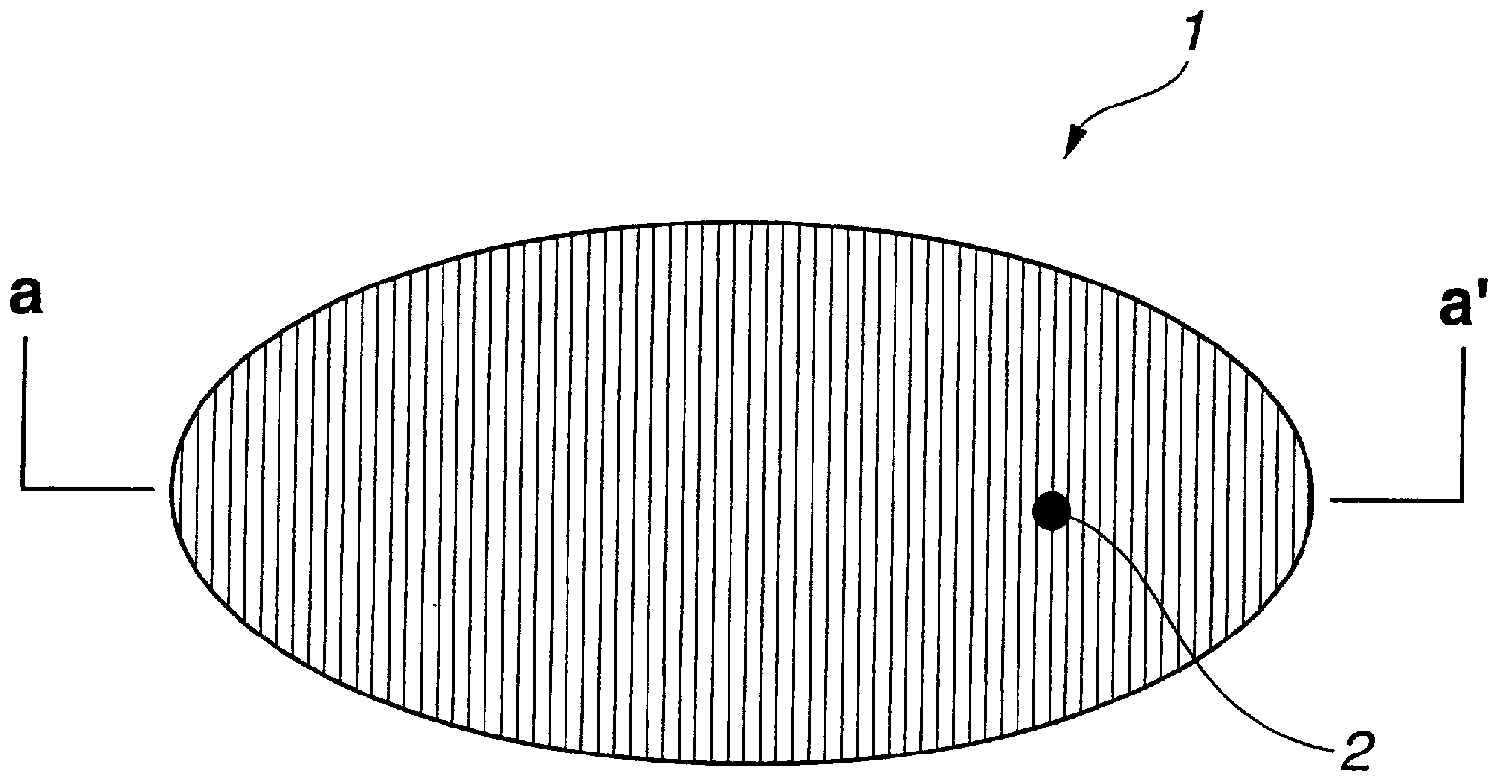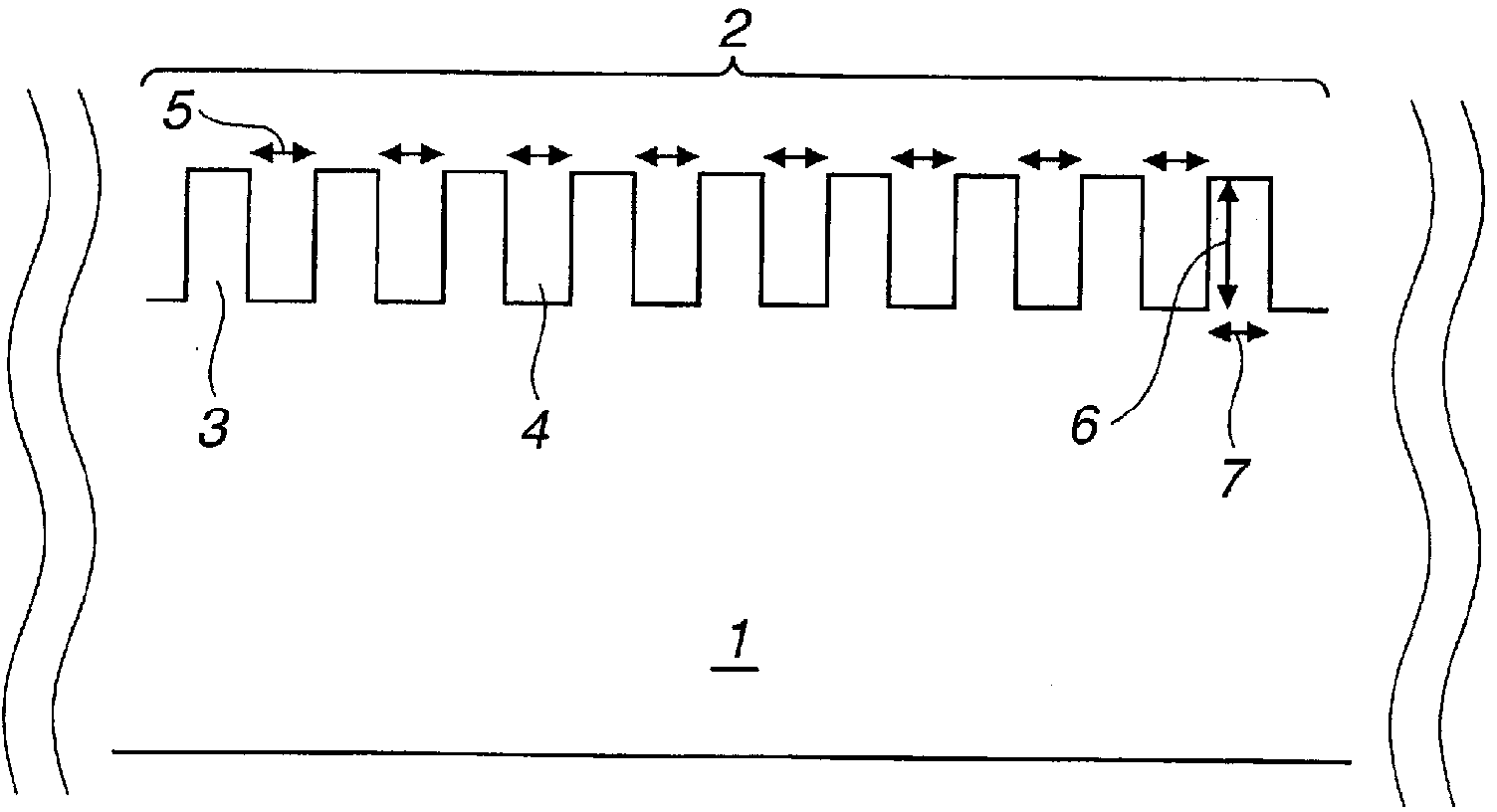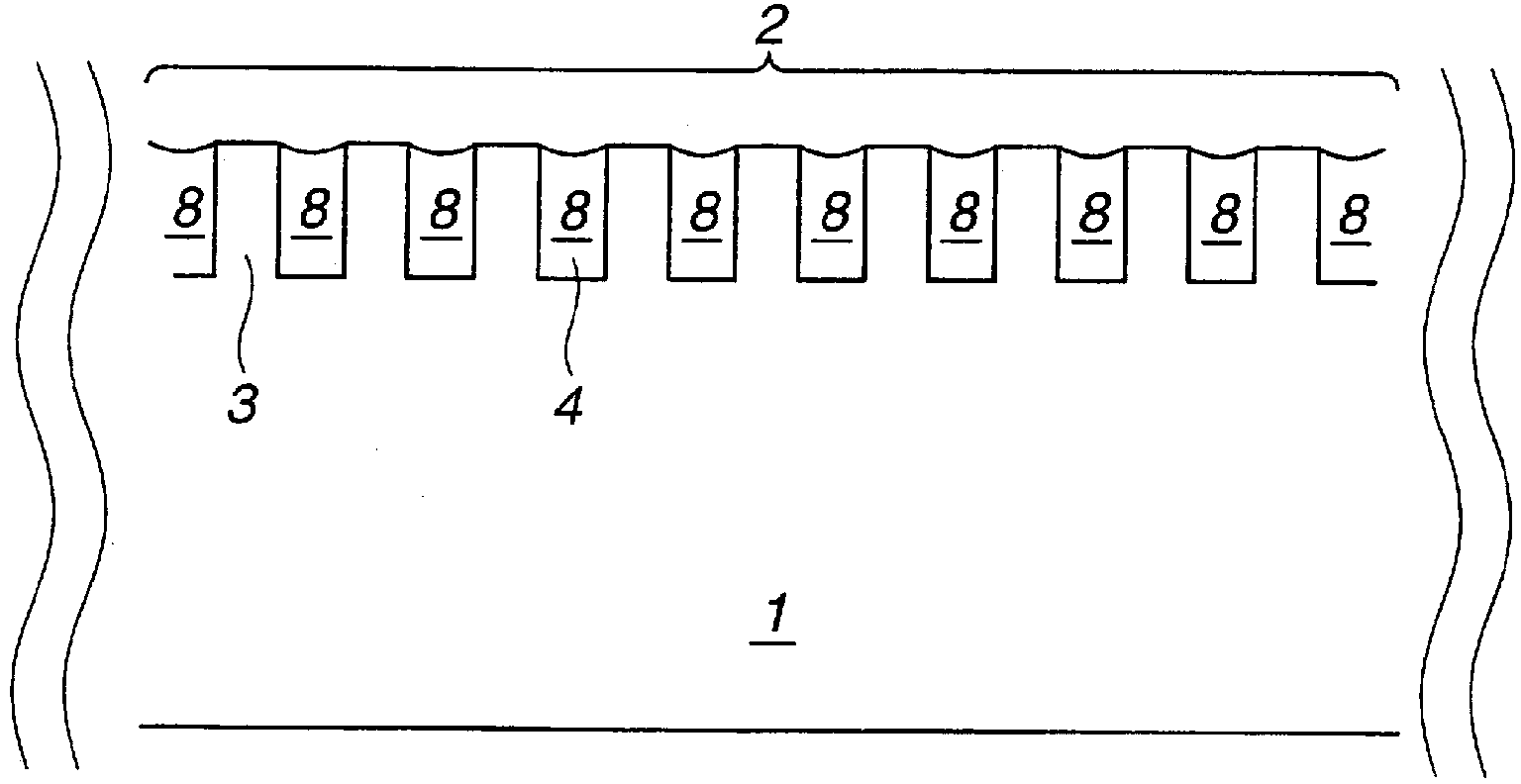Chemical solution for formation of protective film
A chemical solution and protective film technology, which is applied in the manufacture of electrical components, semiconductor/solid-state devices, circuits, etc., can solve the problems of difficult mass production process, poor productivity and cleaning process, and achieve no reduction in productivity, excellent water repellency, and pattern prevention collapse effect
- Summary
- Abstract
- Description
- Claims
- Application Information
AI Technical Summary
Problems solved by technology
Method used
Image
Examples
Embodiment 1
[0170] (1) Preparation of chemical solution for protective film formation
[0171] 1g hexamethyldisilazane [(H 3 c) 3 Si-NH-Si(CH 3 ) 3 ] as silicon compound A, 0.1 g trimethylsilyl trifluoroacetate [(CH 3 ) 3 Si-OC(O)CF 3 ] Acid A and 98.9 g of propylene glycol monomethyl ether acetate (PGMEA) were mixed as an organic solvent to obtain a chemical solution for forming a protective film. Here, it was confirmed that the total amount of water in the starting material of the chemical solution was 5000 mass ppm or less with respect to the total amount of the material. Moisture was removed from the chemical solution using molecular sieve 4A (manufactured by UNION SHOWA K.K.), and then metal impurities were removed from the chemical solution using ion exchange resin (IonKleen SL, manufactured by Pall Corporation, Japan), and then, metal impurities were removed using a filter (Entegris, Inc., Japan) . Optimizer) filtration to remove particles from the chemical solution, thereby...
Embodiment 2~56
[0180] Conditions such as the silicon compound A used in Example 1, the concentration of the silicon compound A, the acid A, the organic solvent, the treatment sequence after the surface treatment of the protective film forming chemical solution were appropriately changed, the surface treatment of the wafer was carried out, and then the surface treatment of the wafer was carried out. evaluate. The results are shown in Table 1~Table 2.
[0181] [Table 2]
[0182]
[0183] where, in the table, “(H 3 c) 2 Si(H)-NH-Si(H)(CH 3 ) 2 "Means tetramethyldisilazane, "C 6 h 5 Si(CH 3 ) 2 -NH-Si(CH 3 ) 2 C 6 h 5 "means diphenyltetramethyldisilazane," CF 3 C 2 h 4 Si(CH 3 ) 2 -NH-Si(CH 3 ) 2 C 2 h 4 CF 3 "means 1,3-bis(trifluoropropyl)tetramethyldisilazane, "(CH 3 ) 3 Si-N(CH 3 ) 2 "Means dimethylaminotrimethylsilane," (CH 3 ) 3 Si-N(C 2 h 5 ) 2 "means diethylaminotrimethylsilane," (CH 3 ) 3 Si-NCO" means trimethylsilyl isocyanate, "C 4 h 9 Si(CH 3 ) ...
Embodiment 57
[0198] 1g hexamethyldisilazane [(H 3 c) 3 Si-NH-Si(CH 3 ) 3 ] as silicon compound B, 0.1 g trifluoroacetic anhydride [{CF 3 C(O)} 2 O) as acid B and 98.9g PGMEA as an organic solvent are mixed, and a protective film containing trimethylsilicon trifluoroacetate as acid A, hexamethyldisilazane silicon as compound A, and PGMEA as an organic solvent is obtained by reaction Except using a chemical solution, it carried out similarly to Example 1. The hexamethyldisilazane contained in the chemical solution of this example is silicon compound B not consumed in the aforementioned reaction for obtaining acid A, and this component functions as silicon compound A. The evaluation results are shown in Table 3. The contact angle after the surface treatment was 82°, showing the effect of imparting water repellency. In addition, the capillary force when water is kept is 0.4MN / m 2 , small capillary force. In addition, the contact angle after UV irradiation was less than 10°, and the pro...
PUM
 Login to View More
Login to View More Abstract
Description
Claims
Application Information
 Login to View More
Login to View More - R&D
- Intellectual Property
- Life Sciences
- Materials
- Tech Scout
- Unparalleled Data Quality
- Higher Quality Content
- 60% Fewer Hallucinations
Browse by: Latest US Patents, China's latest patents, Technical Efficacy Thesaurus, Application Domain, Technology Topic, Popular Technical Reports.
© 2025 PatSnap. All rights reserved.Legal|Privacy policy|Modern Slavery Act Transparency Statement|Sitemap|About US| Contact US: help@patsnap.com



